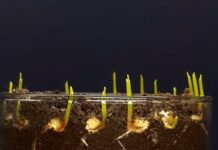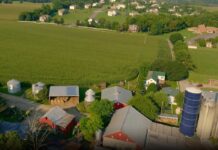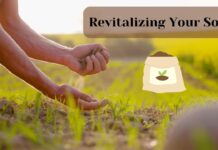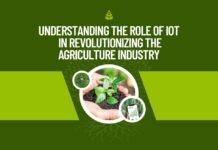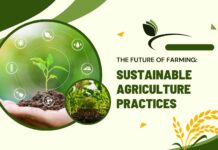
Organic aquaculture in India: Organic aquaculture aims at maintaining system sustainability by limiting the introduction of harmful substances that adversely affect the ecosystem. Organic aquaculture is a process of sustainable cultural practices, based on environmentally and ecologically sound practices in the long term. These practices help to raise aquatic products in a humane, sustainable, and also pollution-free manner. Good health management practices, for example, should be from accredited sustainable sources to reduce stress by ensuring free movement, reasonable living conditions, and optimal storage compared to the carrying capacity of organic feed farming. The goods harvested must be pollution-free and manufactured sustainably.
Guide to organic aquaculture in India
Organic aquaculture principles are to produce healthy, disease-free natural seafood without the use of antibiotics, hormones, and chemicals, etc., and to protect the environment from all adverse conditions as well.
By reducing the total exposure to toxic chemicals and antibiotics, organic aquaculture effectively preserves consumer health. It is a manner of producing approved in a fair and environmentally responsible way. These have the production of natural fish, improving traditional production and high efficiency with low stocking density. Disuse of chemicals, and controlled and certified production of growth or breeding hormones until consumption is the main benefits of organic aquaculture. Despite these reasons, the organic aquaculture program is getting a great deal of attention all over the world.
Organic aquaculture plays an important role in improving soil fertility, reducing production costs, and making consumers safer. Chemical fertilizers leave toxic plant residues. Long-term use of these organic foods can lead to serious illnesses. And chemical substances mix and contaminate both the soil and the water.
 Importance of Organic Aquaculture in India
Importance of Organic Aquaculture in India
Organic aquaculture farming has become more important as consumers are more aware of the harmful impacts of intensive and unsustainable aquaculture on the environment, sustainability, and. It aims to provide ecologically, economically, and socially sustainable fish and fishery goods. Diversity at the species, management, and culture levels in aquaculture requires tremendous efforts to utilize the immense potential of organic aquaculture.
Organic fish farming
Organic fish farming is a recently established idea and is still in the early stages of growth and aims to restore a proper balance in aquaculture systems for the benefit of fish, the ecosystem, and consumers.
However, three issues need to be reconciled for the time being in order to set expectations. And, it is not to be permitted to use pesticides and antibiotics that are conventionally used in aquaculture. The main issue is water, which is both soil and air to the fish, whose quality plays an important role in product quality. Standards on the quality and purity of incoming and outgoing water should be set as regards the environmental effects.
The feed is to be produced organically, consisting mainly of fishmeal, fish oil, cereal-based products, vitamins, and minerals, etc. And getting down and reducing the number of organochlorine contaminants in marine fish that are used for processing into fishmeal is not a simple task.
Water fed with natural ingredients from certified organic farming and sustainable fisheries – feed is developed precisely to suit exactly what our water will consume in the wild.
Raised in the Mediterranean ‘s clean and deep waters – the production site is free from all industrial, agricultural, and urban activity and virtually unpolluting.
Raised in spacious enclosures, making up 1% of the volume in their pens – reducing population density to 1/3 that of traditional farms allows our fish to live in a way that is normal to the fish species and according to the highest standards of animal welfare.
Slowly raised as intended by nature-no additives, antibiotics or chemicals of any kind are permitted in production.
Also, See 5 Tips on How to Start Fish Farming
Fish health and welfare
Management practices in organic agriculture achieve a high level of disease resistance and infection prevention. In principle, some precautions must be taken for the fish not to be sick. All management techniques maintain the good health of living organisms, particularly when influencing production rates and speed of development. To maintain this, stock intensity must below, there should be regular health checks. That means that dead fish should be removed from the pool immediately, and stressing factors should be reduced to the minimum. The preference of the disease- and subspecies-resistant species must be considered. It may be preferred to the fish species whose races are in danger.
Certified organic aquaculture in India
The National Organic Standards Board (NOSB), a body elected to lead the U.S. Policy decisions of the Department of Agriculture on the certified organic aquaculture NOP (National Organic Program), recommended the following criteria for organic fish;
Fish should not be fed non-organic food. Approximately 100 percent of organic feed is currently required for certified organic livestock.
Farmed fish to be fed fishmeal made from wild fish not carrying mercury and additional toxins.
And that fish should not be raised in open-net pens. These cages can lead to concentrated waste pollution and can spread disease and parasites to wild fish populations. Organically farmed species include freshwater trout, carp, eel, tench, catfish, tilapia, saltwater salmon, sea bass, sea bream, turbot, moose, and shrimp.
Source of seed and breeding for organic aquaculture in India
- To mitigate stress on the broodstock, breeds, and breeding techniques suitable to the species, climate, processing processes, and local conditions must be followed.
- Except for bivalves, selection of wild seeds for selective stocking is prohibited. The passive entry of wild seeds is permitted in traditional farming, as it ensures species diversity in farming.
- The seed that is certified organically must be used. If the organic seed can not be obtained, the certifying body would prescribe a time limit for use of non-organic seed depending on the species in question.
- Natural broodstock collection for tiger shrimps is allowed until domesticated broodstock is commercially obtainable in the country.
Important steps to be taken for organic aquaculture in India
- Evaluate the potential of crop farms as organic aquaculture producers and promote their certification. And raising the cost of certification, without diluting requirements, to make them available to small farmers.
- Acceptance by Indian Government of the draft Indian Organic Aquaculture Standards and establishing a domestic market for organic aquaculture products.
- Increase awareness of the potential of organic aquaculture and organic farming developed in India through appropriate extension services, among farmers as well as consumers.
- Full economic analysis of organic aqua-farming for growing species and the premium price to be received. Encourage the organic produce domestic market.
- Assess the bottlenecks for receiving organically certified inputs and increase the process to achieve this. Promote research into sustainable agronomic methods, disease and pest biocontrol, and biofertilizers, etc.
 Organic Aquaculture Production
Organic Aquaculture Production
Environment or Water Quality
The water supply should be filled with feed waste, which can cause overfertilization or other disruptions to the natural environment, to the least possible degree. The water resources obtainable should not be depleted or exploited excessively by aqua farmers and must preserve the natural quality of the water.
Breeds
Breeds must be used which are suited to local conditions. To prevent inbreeding and loss of genetic variation, breeding should be done on a large number of breeding pairs. We will not use triploid, genetically modified species. Breeding can be performed using natural methods. Broodstock should come from organic sources, wherever available. In an organic environment, modern species must spend at least two-thirds of their life cycle. We did not require triploid and genetically modified fish.
Feed and feeding
The feed is made from organic raw materials extracted from wild aquatic stocks. Aquatic raw materials from stocks that are not used for human consumption and from by-products should be used for the preparation of feed for fishery management services. Feeding should be carried out in such a way that natural feed can be obtained in a pond system is also consumed with minimal wastage of the supplemented feed.
Nutrition
Organic aquaculture program offers a nutritionally healthy diet that is of high quality. The feed is given to the species in a manner that allows for natural feeding activity, with minimal feed loss.
Aquafeeds should contain 100 percent approved organic components from by-products, and at least 50 percent of their dietary protein. The feed or fertilization shall be based on animals or plants. Mineral supplements can be allowed. It is not permitted to use synthetic growth promoters, antioxidants, preservatives, and coloring agents.
Transport
Transportation should not cause aquatic animals avoidable stress or physical injury. There must be no harmful effects on transport equipment. Appropriate transportation standards, such as water quality and quantity conservation, minimum distance, and time for transportation and safeguards against escape during transportation, must be followed. The animals do not obtain chemical tranquilizers or stimulants before or after transport.
Treatments and animal health welfare in aquatic organisms
Considering the concept of “Prevention is better than cure” in aquatic organisms health management must be followed so that no need for medication exists. If a sign of illness is still present, appropriate measures shall be taken immediately. Drugs with the least adverse impact on the environment and with the lowest risk to human and animal safety must be used for care.
Benefits of organic aquaculture in India
Many customers may favor organic products for animal welfare purposes because of their reduced synthetic chemical loads, or even claims of increased nutritional value.
Where organic feed substitutes wild-caught components with fishery by-products and uses large amounts of organic-plant components, the effect of decreased fishing pressure on wild stocks and a reduced carbon footprint on the ecosystem is lowered.
Control of feed is maintained by monitoring as well as a sufficient supply of feed, thereby reducing the stress to the organism. In addition, the controlled ecosystem decreases the problems with the disease and helps maintain safe water quality.
Good and tasty products derived from organic farming without any synthetic chemicals will give consumers a sound and healthy environment.
Principles of organic aquaculture
The main principle of organic aquaculture include;
- Absence of GMOs (genetically modified organisms) in stocks and feed products-focusing on vegetable feed ingredients such as biotechnology-derived soybeans and feed additives, as well as transgenic, triploid, and all-female stocks.
- Limitation of stocking density-taking into account the site’s ecological potential and animal-specific actions of example shrimps 15 PL / m3, resp. Max. 800kg / ha per period of output.
- Source of vegetable feed and fertilizer from certified organic production, no artificial feed ingredients, and sustainable aquaculture production networking operations.
- No use of inorganic fertilizer-that is nutrient recycling rather than intensive inputs.
- No use of synthetic pesticides – keeping the farm area naturally diverse.
- For example, restriction on energy consumption regarding aeration as a general trend; de-intensification of operations, reduction of inputs.
- Preference for natural drugs, no prophylactic use of antibiotics, no use in invertebrate aquaculture of certain substances.
- Production of a finished product to be certified as organic according to organic concept criteria.
Steps to organic aquaculture certification
Exchange of information
Exchange of knowledge is the first step towards certifying organic aquaculture. That provides comprehensive information on certification technical and formal aspects. And in this step, a basic survey of the questionnaire is conducted.
Pre-evaluation visit
The purpose of this visit is to get an impression of the on-site situation and to discuss the steps towards conversion with all involved parties, setting out the conversion plan.
Inspection
The cost estimate will be provided by the inspectorate before the scheduled inspection. The inspector will issue the inspection report to the certificate agency after the inspection, in order to evaluate the findings.
Certification
The inspection report is forwarded to the Certification Committee along with further results. The decision of the committee is communicated to the farm by letter of certification, which contains the conditions to which the certification is subject. It focuses on renewing the award annually.
Also, See Essential Tips on Animal Husbandry: What You Should Know

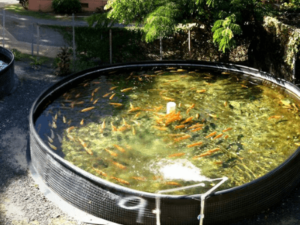 Importance of Organic Aquaculture in India
Importance of Organic Aquaculture in India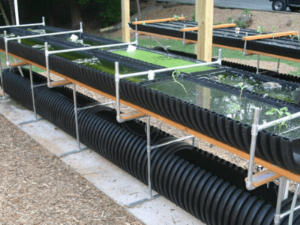 Organic Aquaculture Production
Organic Aquaculture Production